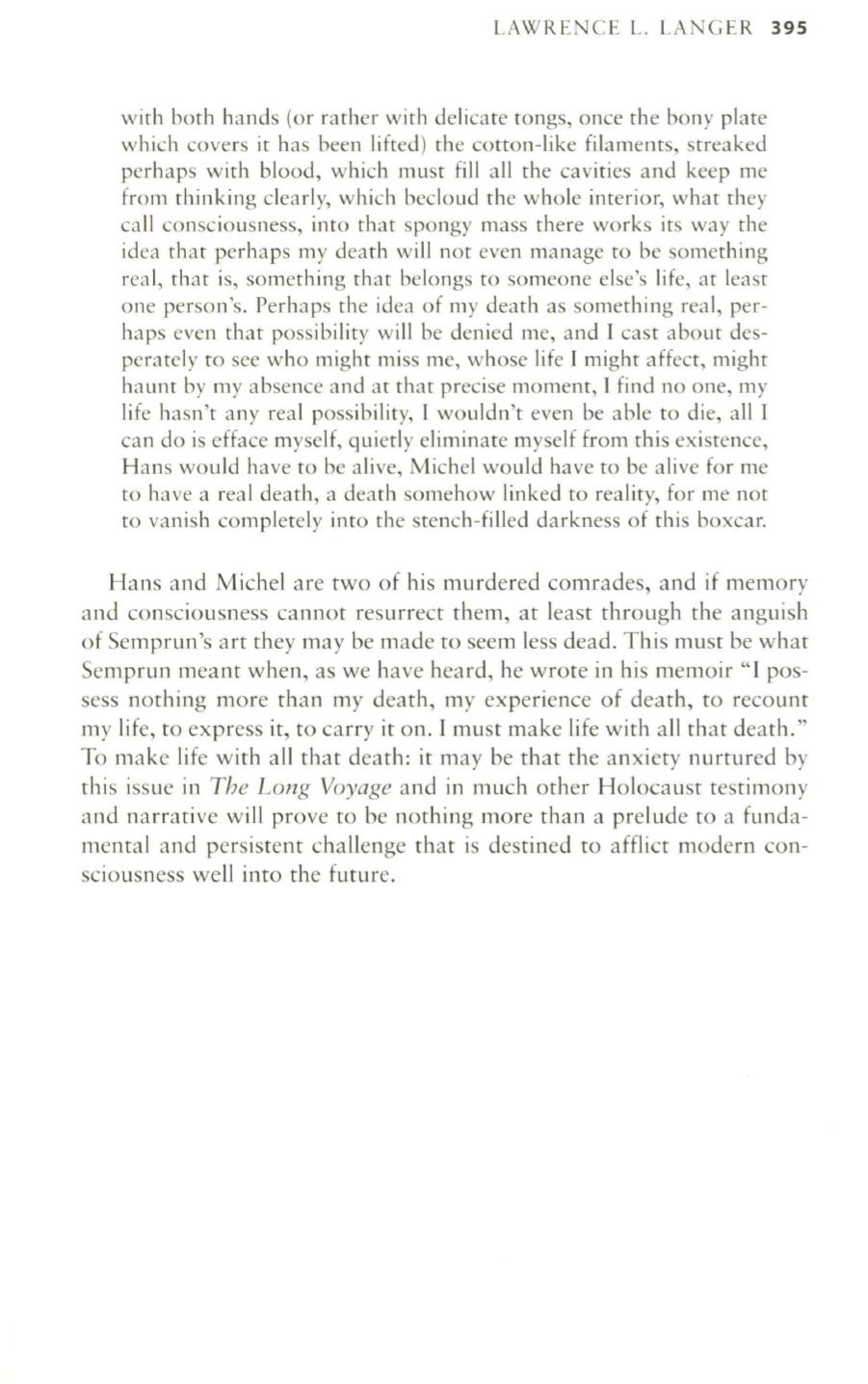
LAWRENCE L. LANGER
395
with both hands (or rather with delicate tongs, once the bony plate
which covers it has been lifted) the cotton-like filaments, streaked
perhaps with blood, which must fill all the cavities and keep me
from thinking clearly, which becloud the whole interior, what they
call consciousness, into that spongy mass there works its way the
idea that perhaps my death will not even manage to be something
real, that is, something that belongs
to
someone else's life, at least
one person's. Perhaps the idea of my death as something real, per–
haps even that possibility will be denied me, and I cast about des–
perately to see who might miss me, whose life I might affect, might
haunt by my absence and at that precise moment, I find no one, my
life hasn't any real possibility, I wouldn't even be able to die, all I
can do is efface mysel f, quietly el imi na te mysel f from th is existence,
Hans would have to be alive, Michel would have to be alive for me
to have a real death, a death somehow linked to reality, for me not
to vanish completely into the stench-filled darkness of this boxcar.
Hans and Michel are two of his murdered comrades, and if memory
and consciousness cannot resurrect them, at least through the anguish
of Semprun's art they may be made
to
seem less dead. This must be what
Semprun meant when, as we have heard, he wrote in his memoir "I pos–
sess nothing more than my death, my experience of death,
to
recount
my life,
to
express it,
to
carry it on. 1 must make life with all that death."
To make life with all that death: it may be that the anxiety nurtured by
this issue in
The Long Voyage
and in much other Holocaust testimony
and narrative will prove
to
be nothing more than a prelude
to
a funda–
mental and persistent challenge that is destined
to
afflict modern con–
sciousness well into the future.


